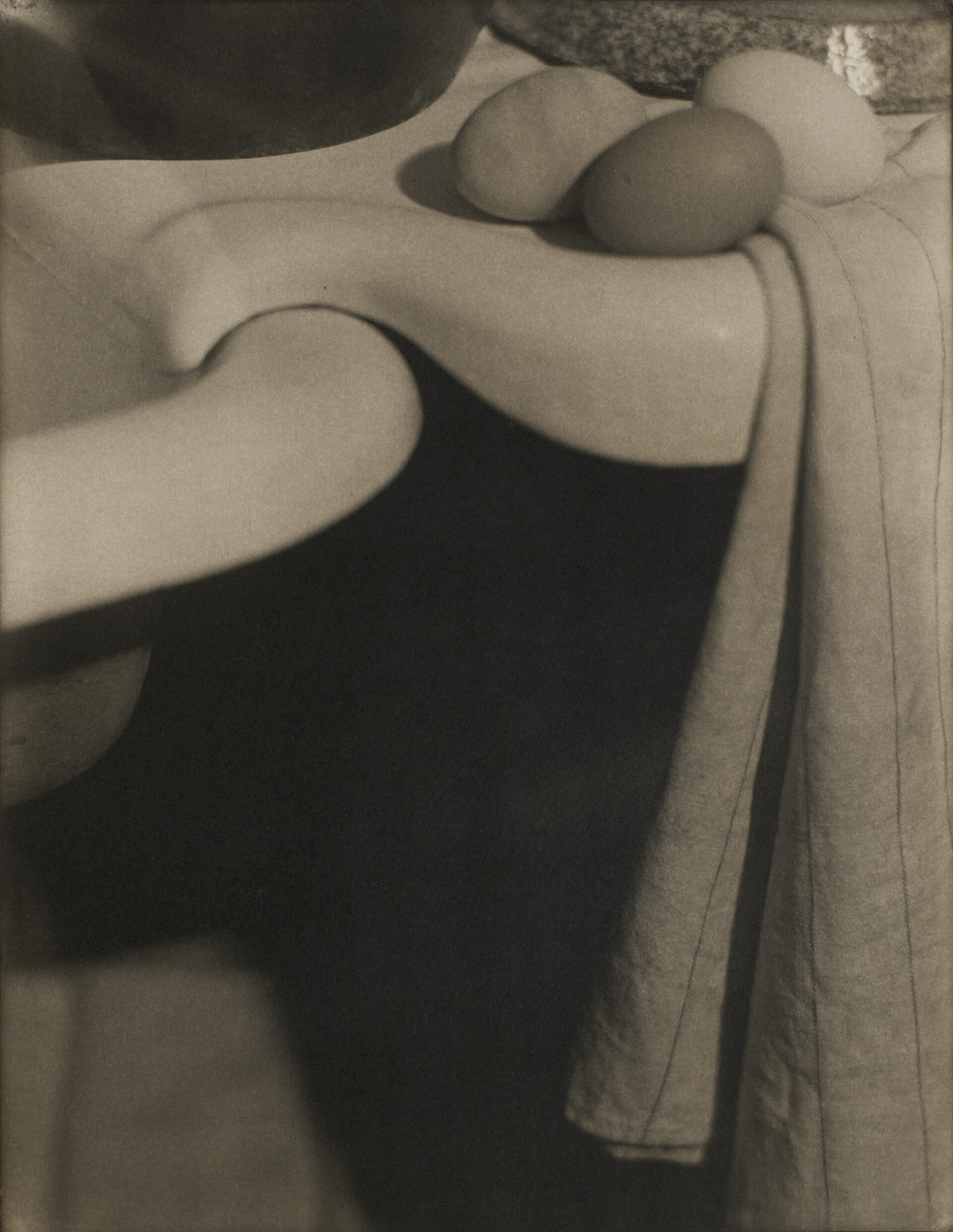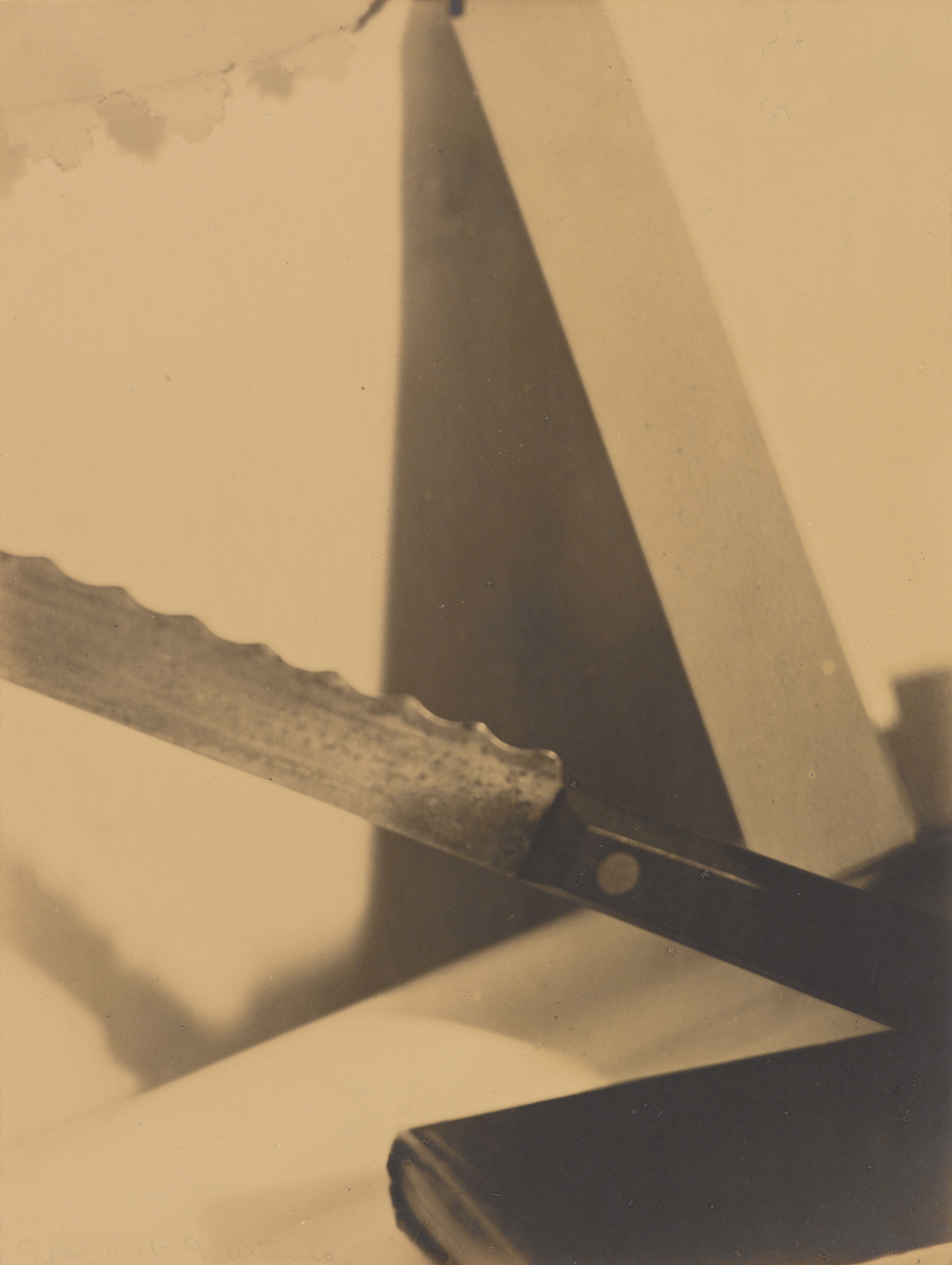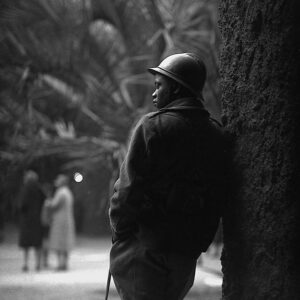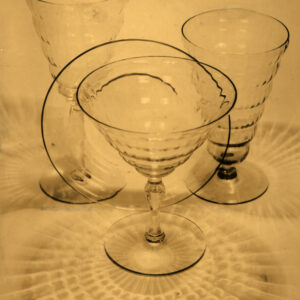Domestic Symphony 1919

Margaret Watkins, Domestic Symphony, 1919
Palladium print, 21.2 x 16.4 cm
Various collections
Described by Vanity Fair in 1921 as “strongly reminiscent of the sculptures of [Constantin] Brâncuși,” Margaret Watkins’s Domestic Symphony is arguably her most successful photograph. Out of the objects in her kitchen, she constructed an image of repetitive forms and dark interior. It is a sensuous masterpiece. Here she combined her kitchen still-life genre with the sensuousness of a nude study, in a scene reminiscent of musical form.
Sometimes titled Eggs on Porcelain, the photograph depicts the rim of her white porcelain sink, three eggs of varying tones settled on the attached draining unit, the bottom of a kettle and an enamel bowl, and a towel hanging down the right side. The curves of the white porcelain fold into each other, visually reminiscent of one limb folding into another, or of a wave forming at its peak. And once the viewer has focused on that central shape, it becomes apparent again and again in the work, multiplied as each egg meets another, as the teakettle and bowl touch, and, in an elongated form, in the crease of the towel. To accentuate both the sensuality and the mystery of this photograph, Watkins leaves the centre dark, pushing the objects to the edge of the composition. The towel on the right does not hang at a straight right angle to the ledge. It moves slightly out toward the darkness, drawing the eye inward and upward to the crest in the white porcelain.

This photograph was exhibited at the First International Kohakai Salon of Photography, in Kobe, Japan, in the summer of 1922. It received an honourable mention at the Third International Exhibition of Pictorial Photography, under the auspices of the Royal Agricultural and Industrial Society, in New Westminster, B.C., in September 1923, and also at the Frederick & Nelson Fourth Annual Salon of Pictorial Photography, Seattle, Washington, in November 1923.
With the title Domestic Symphony in mind, we might rewrite the scene entirely in terms of musical form. One of Watkins’s most convincing descriptions of her art is in terms of music: “Simple + inconsequent subject may provide a motive for beautiful & rhythmic patterns which stir emotion quite unrelated to original subject—the austere abstract beauty of a Bach fugue, theme answering theme, phrase offsetting phrase.” In Domestic Symphony, one can see the rhythmic pattern of curve meeting curve, with diminution and variation. This is photography that moves its viewer through form and tones. Another way of understanding Watkins’s integration of music and image is to see it as synesthesia, an experience of one sense, in this case visual, triggering the experience of another, here sound. As Andrea Nelson writes, “Watkins draws together domestic labor, the artistic process, and the phenomenon of synesthesia, in which the pathways of the senses cross.”
A comparable musical composition is The Bread Knife, 1919, exhibited as Design – Angles in San Francisco and in Kobe, Japan, in 1922, and featured along with Domestic Symphony in the 1921 Vanity Fair article on Watkins, where it was compared to the Cubist art of Pablo Picasso (1881–1973). If Domestic Symphony works with the meeting of curves, Design – Angles is all in the meeting of straight lines. The angles proliferate—at varied intervals on the edge of the knife (short), in the wallpaper trim (slightly longer), in the meeting of knife, board, and book, each of these with their shadows, and finally, climactically, in the dark triangle at the centre of the photograph.

 About the Author
About the Author
 More Online Art Books
More Online Art Books
 Acknowledgements
Acknowledgements